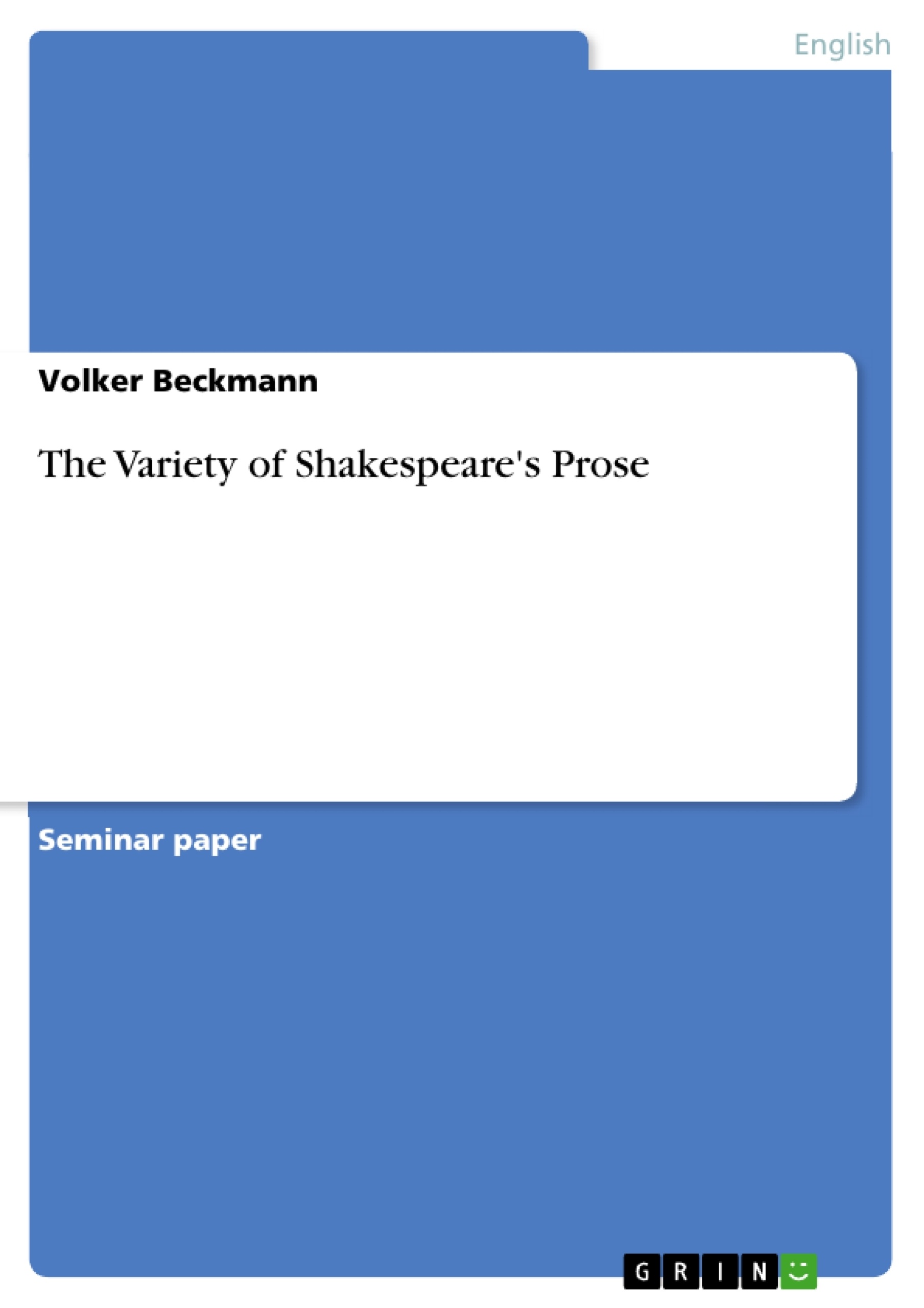The aim of the following paper is to take a closer look at Shakespeare’s prose from a stylistic, linguistic and rhetorical point of view. Given the fact that Shakespeare’s prose occurs both in his comedies, tragedies and histories and prose is being used in his plays by characters of different social ranks the question is to be asked which various functions prose as a medium fulfils in relationship to such other functions as setting, dialogue, action and theme. According to Brian Vickers Elizabethan audiences must have been aware of the alternation of prose and verse. It can be assumed that any deviation from the norm which was blank verse was a) felt by attentive audiences and b) had an impact on the way actors behaved on the stage. In the following essay I shall employ the critical method devised by Vickers in his book “The Artistry of Shakespeare’s Prose”. First, I shall be dealing with different forms of Shakespearean imagery. For the sake of convenience, I am making use of the categories suggested by Vickers. Second, I am trying to find examples showing those recurrent Shakespearean devices which have a determinant influence on what Vickers calls ‘the linguistic structure’. These devices include features like repartee, equivocation, comic logic; malapropism, repetition; foreign and regional English; unusual syntax; fondness for proverbs; word play and punning. Third, I shall prove that Shakespeare made frequent use of various rhetorical figures.
Inhaltsverzeichnis (Table of Contents)
- Introduction
- Part one: Various forms of Shakespearean Imagery
- Thematic Imagery
- Situational Imagery
- Atmospheric imagery
- Subjective Imagery
- Objective Imagery
- Forensic Imagery
- Part Two: Some Recurrent Linguistic Features in Shakespeare's
Dramatic Language
- Repartee
- Equivocation
- Comic Logic
- Malapropism
- Repetition
- Foreign and Regional English
- Fondness for Proverbs and Sententiae
- Wordplay and Punning
- antanaclasis
- paronomasia
- syllepsis
- asteismus
- Part Three: Some Rhetorical Figures in Shakespeare's Plays
- anaphora
- antimetabole (chiasmus)
- epistrophe
- gradatio
- hypallage
- isocolon
- parison
- par omoion
- Conclusion
Zielsetzung und Themenschwerpunkte (Objectives and Key Themes)
This paper aims to examine Shakespeare's prose from a stylistic, linguistic, and rhetorical perspective. It explores the various functions of prose as a medium in relation to other elements like setting, dialogue, action, and theme. The paper investigates how Shakespeare uses prose in different genres and by characters of diverse social ranks.
- The use of prose in Shakespeare's plays
- The relationship between prose and verse in Shakespeare's work
- The linguistic features of Shakespearean prose
- The role of imagery in Shakespeare's prose
- The use of rhetorical figures in Shakespeare's plays
Zusammenfassung der Kapitel (Chapter Summaries)
The first part of the paper explores different types of Shakespearean imagery, using categories suggested by Brian Vickers. It examines thematic imagery, including the disease imagery in Hamlet and the food-disease-animal imagery in Troilus and Cressida. The chapter also analyzes examples of situational, atmospheric, subjective, objective, and forensic imagery.
The second part delves into recurrent linguistic features in Shakespeare's dramatic language. It explores devices like repartee, equivocation, comic logic, malapropism, repetition, foreign and regional English, fondness for proverbs, and wordplay. The chapter provides examples of each feature from Shakespeare's plays.
Schlüsselwörter (Keywords)
Shakespeare, prose, imagery, linguistic features, rhetorical figures, dramatic language, verse, style, function, setting, dialogue, action, theme, Brian Vickers, The Artistry of Shakespeare's Prose
- Quote paper
- Dr. phil. Volker Beckmann (Author), 1983, The Variety of Shakespeare's Prose, Munich, GRIN Verlag, https://www.grin.com/document/488835



